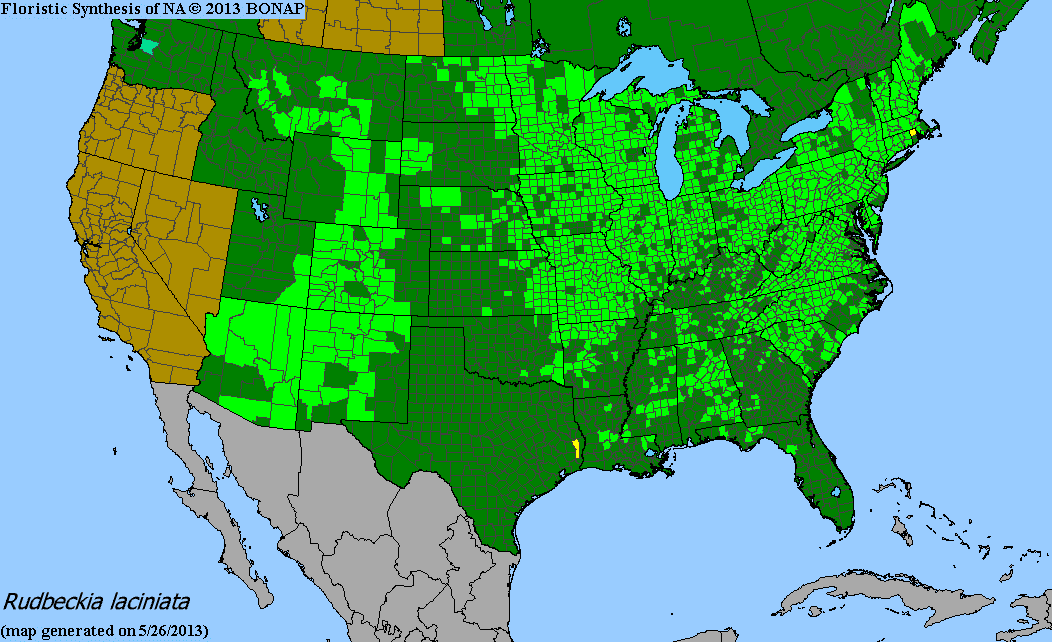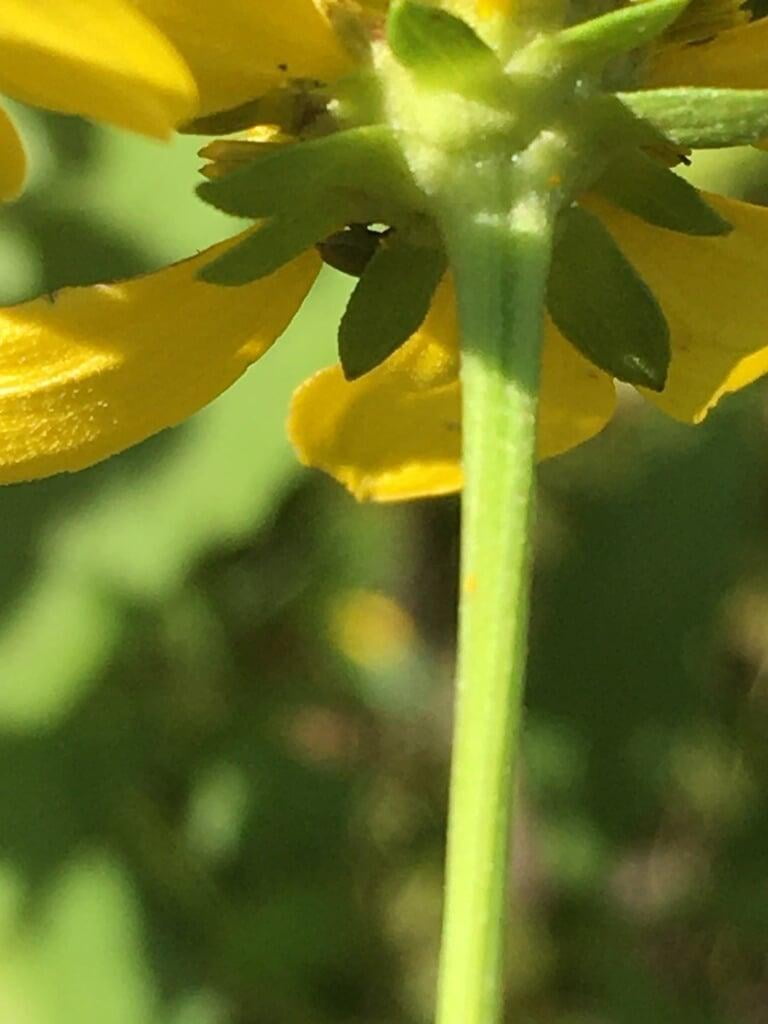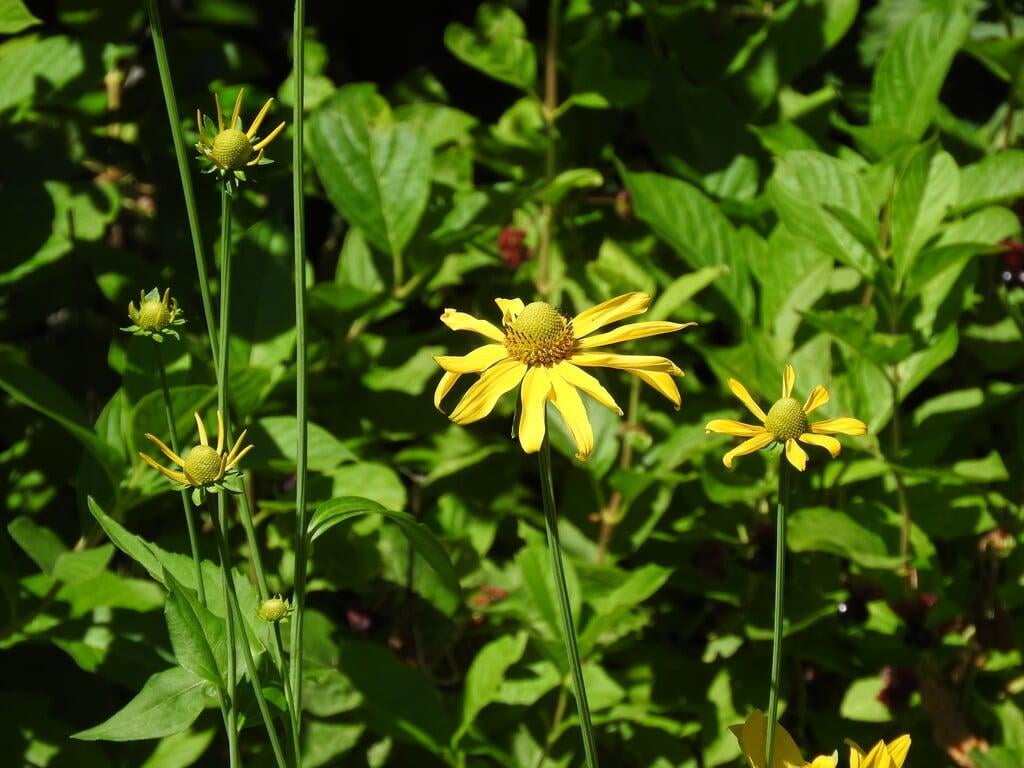Rudbeckia laciniata
Green-headed coneflower Description:
Rudbeckia laciniata, also known as Green-headed coneflower or Cutleaf Coneflower, is a herbaceous perennial plant that is native to North America. It is known for its large, bright yellow flowers that bloom from midsummer to early fall. The plant can reach up to eight feet in height and has deeply lobed, toothed, and coarse foliage. The stems of Rudbeckia laciniata are also coarse and can be quite sturdy, allowing the plant to withstand strong winds and heavy rains. This makes it an excellent choice for use in rain gardens or as an erosion control plant.
Rudbeckia laciniata is a valuable plant for wildlife, providing food and habitat for bees, butterflies, and birds. The plant's large flowers are particularly attractive to bees, which collect nectar and pollen from the plant. Birds and other animals also forage on the plant's seeds. In addition to its ecological value, Rudbeckia laciniata is a popular garden plant due to its attractive flowers and height. It can be used in a variety of garden settings, from mixed borders to large backdrops, and is often used as a cut flower. The plant is also well-suited for wetland gardens, where its ability to tolerate wet soil conditions makes it an excellent choice.
Overall, Rudbeckia laciniata is a versatile and valuable plant that deserves recognition for its ecological and ornamental value. Its attractive flowers, height, and tolerance to wet soil conditions make it an excellent choice for a variety of garden settings, while its ability to provide food and habitat for wildlife makes it an important component of many natural landscapes.
Native Range:
Green-headed coneflower is native to most of the continental United States, ranging from Washington to Maine and all the way down to Texas. Only California, Nevada, and Oregon do not have Rudbeckia laciniata natively growing.
Standard Plant Information:
Plant Height: 2' - 10'
Bloom Time: July - September
Preferred Habitat: Does well in part shade to part sun. Often found in moist fields, woodland edges, shorelines, floodplains, swamps, and even wet ditches.
Sowing:
For most homeowners, the best option is to scatter seed on the ground by hand broadcasting at a minimum of 16-64 pls ounces per acre. For even coverage, we recommend that you broadcast seed in perpendicular rows across the site to ensure even coverage.
You’ll want to broadcast any grass seed first, which will get raked into the soil lightly. Next, it is ideal to mulch the area lightly with either a clean (no seed) straw or preferably with our native Little Bluestem straw, sold at our retail garden centers. After a light mulching is complete, now it’s time to broadcast your native wildflower seeds, which should not be raked into the soil. A good rain or watering is sufficient to cover the seed.
Planting:
Simply dig a hole in the soil slightly larger than the plant’s roots. Ensure that the soil line of the plant is maintained during the transfer (i.e. the plant should be at the same level with the ground as it was in the pot). Pack any loose dirt back around the plant and make sure you water it well the same day to ensure it has the best chance of survival.











